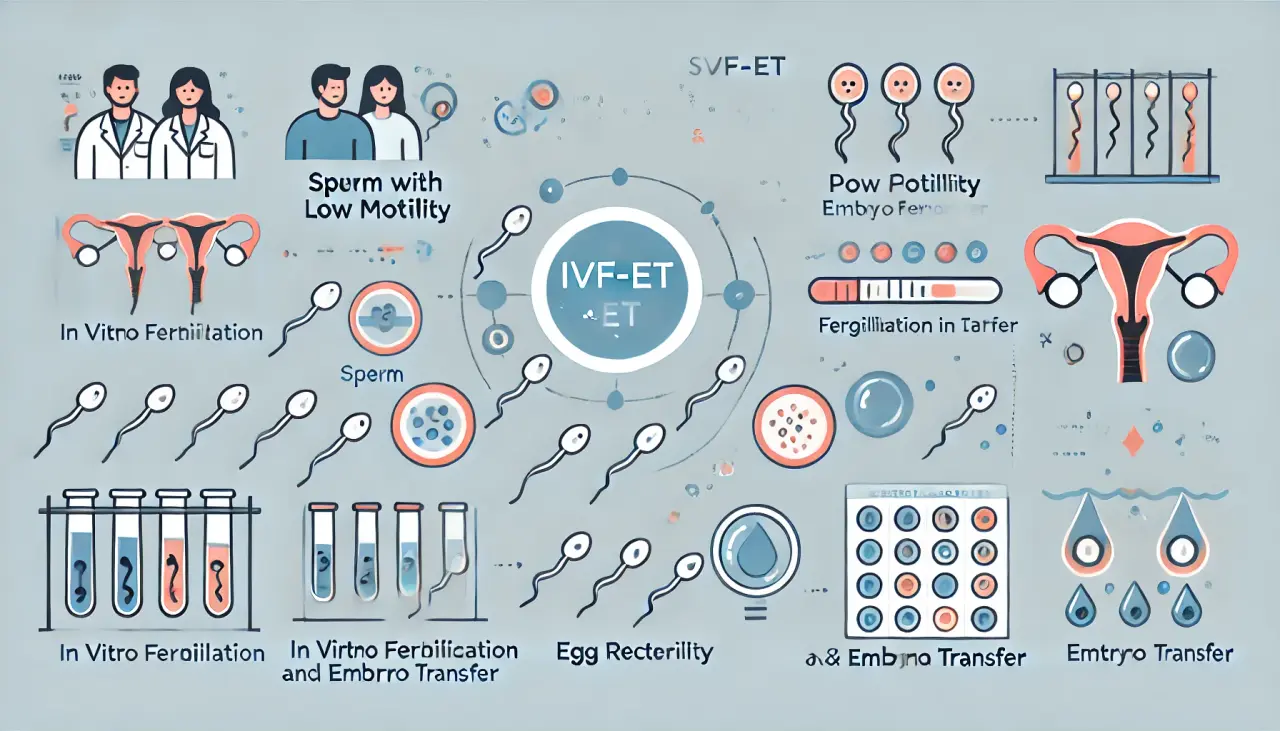
How IVF-ET Helps with Poor Sperm Quality and Enhances Fertility Success
Poor sperm quality, characterized by low sperm count, poor motility, or abnormal morphology, can significantly affect the chances of successful fertilization. This directly impacts the success rates of assisted reproductive technologies like in vitro fertilization (IVF). Poor sperm quality can be caused by a variety of factors, such as unhealthy lifestyle choices, endocrine disorders, reproductive infections, and conditions like varicocele. IVF-ET (In Vitro Fertilization-Embryo Transfer) offers a solution for many couples struggling with these challenges, particularly in cases of mild sperm abnormalities.
What is IVF-ET?
IVF-ET, or In Vitro Fertilization and Embryo Transfer, is a highly effective fertility treatment that allows for egg fertilization outside the body. Once eggs and sperm are retrieved, they are fertilized in the lab, and the resulting embryos are cultured for transfer into the woman’s uterus. This process significantly increases the chances of successful fertilization and pregnancy, especially in cases of male infertility due to poor sperm quality.
Advantages of IVF-ET Technology
1. Addresses Multiple Infertility Issues
IVF-ET is an effective solution for various infertility causes, including blocked fallopian tubes, ovulation disorders, endometriosis, and male sperm abnormalities. For men with low sperm count or poor sperm quality, IVF-ET provides a viable route to parenthood.
2. Improves Fertilization Success Rates
One of the major benefits of IVF-ET is the ability to optimize both sperm and eggs. Sperm with lower motility or quality can still be used in conjunction with healthy eggs for fertilization, significantly improving the chances of successful conception. IVF-ET ensures that only the healthiest sperm are used, maximizing fertilization potential.
3. Personalized Treatment Plans
IVF-ET is customizable, with treatment plans tailored to the patient’s specific fertility needs. Ovarian stimulation protocols, embryo culture durations, and fertilization techniques are adjusted to enhance success rates. This personalized approach provides hope for those facing infertility challenges due to poor sperm quality.
4. Embryo Screening and Genetic Diagnosis
Using advanced genetic screening technologies, embryos can be tested for chromosomal abnormalities. This allows the selection of the most viable embryos for transfer, reducing the risk of genetic disorders and improving the likelihood of a healthy pregnancy. IVF with genetic screening further enhances the success rates of IVF-ET, especially for couples with known genetic concerns.
How IVF-ET Helps with Poor Sperm Quality
When sperm quality is compromised, fertilization rates can drop, making it challenging for couples to conceive. IVF-ET, however, bypasses some of these obstacles by using the healthiest sperm available for fertilization. In cases of very low sperm count or motility, sperm can be directly injected into the egg through intracytoplasmic sperm injection (ICSI), which is a part of the IVF-ET process. This increases the chances of successful fertilization and pregnancy.
Conclusion
IVF-ET offers a revolutionary solution for couples dealing with poor sperm quality and other infertility challenges. With personalized treatment plans, advanced technologies like genetic screening, and the ability to optimize sperm and egg quality, IVF-ET maximizes the chances of achieving a healthy pregnancy. For those facing fertility issues, IVF-ET represents a beacon of hope, providing an opportunity for parenthood even in the most difficult cases.